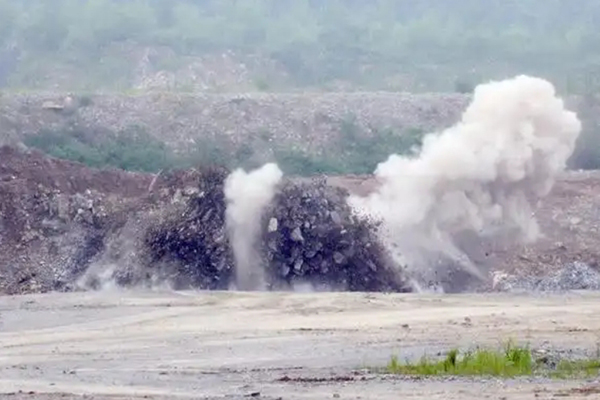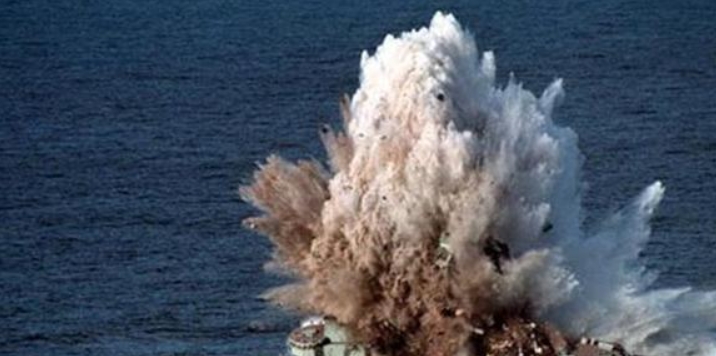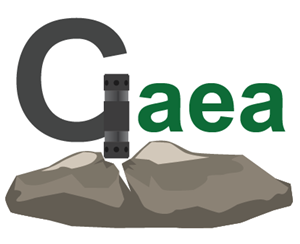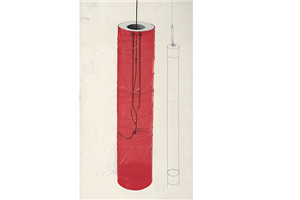Characteristics of Underwater rock blasting and its operation methods
Underwater rock blasting refers to blasting in which the upper part of the blasted rock mass is covered by a water medium. Compared with general soil and rock blasting operations, the drilling, charging and detonation methods have become complicated due to the influence of the intermediate medium water.
With the development of onshore blasting technology, underwater drilling and blasting technology has also made great progress. After fifty years of exploration, the Chongqing Waterway Engineering Bureau of the Yangtze River has successfully solved a series of problems such as positioning, drilling, charging and detonation, and safety protection, and created a complete set of advanced experience and construction technology for underwater drilling and blasting and exposed blasting. In the late 1980s, after years of exploration and practice, the Institute of Mechanics of the Chinese Academy of Sciences developed a new soft foundation treatment technology for the construction of breakwaters and port dikes, and obtained an invention patent, further expanding the application field of Underwater rock blasting.

The operation method and blasting principle of Underwater rock blasting are roughly the same as those of land blasting. Both use the energy released by the explosion of explosives to work on the medium to achieve the purpose of loosening, crushing or throwing rock and soil. However, due to the influence of water as the intermediate medium, the construction is much more difficult than general soil and rock blasting operations. For an Underwater rock blasting project, comprehensive consideration should be given to the size of the project, the surrounding environment, the construction period requirements, construction machinery and tools, etc. Choose the operation method and drilling equipment, select blasting equipment and charging, detonation methods, etc.
1. Characteristics of Underwater rock blasting
1. Selection of blasting equipment The construction conditions of Underwater rock blasting are more difficult and complicated than those of general land blasting. The safety of workers in the harsh environment on the water surface and underwater must be ensured during the transportation, charging and connection of blasting equipment. Highly sensitive explosives cannot be used like land blasting. Instead, emulsified explosives with high safety and strong power should be used, and good water pressure resistance and corresponding anti-floating measures should be taken.
If conditions do not permit, only ordinary blasting equipment commonly used on land can be used, and strict waterproof and pressure-resistant measures must be taken.
2. Selection of blasting parameters The rock debris produced by Underwater rock blasting is washed away by water flow or removed by underwater special debris removal equipment. The particle size requirements for rock debris fragments are more stringent than those for land blasting. The expansion and movement of rock mass blasting in water must work on hydrostatic pressure; the blasting shock wave produces energy loss on the contact surface with the water surface, and the thrown rock must overcome the frontal resistance and viscous resistance of the water to work. The error of underwater construction is also larger than that on land. For these reasons, the unit consumption of explosives required for Underwater rock blasting is often greater than that for land blasting, and the hole spacing and row spacing are denser than those for land blasting, and it is not advisable to use an excessively large blasting action index.

3. The influence of water depth, flow velocity, wind and waves must be considered in blasting construction, especially in construction within the waterway. It is necessary to ensure the safety and reliability of the installation and erection of construction equipment, as well as the lightness and flexibility during movement and retreat, and it must not affect navigation. The Underwater rock blasting construction process is much more complicated than that on land, and special equipment is required for construction. Once a blind shot occurs, it is more difficult to deal with than on land blasting. Therefore, construction operations must be particularly careful and cautious. Explosives and detonators placed in a water environment are vulnerable to damage, requiring that all links of Underwater rock blasting construction be arranged compactly so that charging and blasting can be completed in a relatively short period of time.
The difficulties of Underwater rock blasting construction include:
(1) Difficulty in positioning and locating lines. Due to the influence of water flow and waves, especially the low visibility of water, it is much more difficult to accurately locate the position of the explosive package on the underwater rock surface and strictly control the positioning accuracy during construction than on land. Especially in underwater drilling and blasting construction, if there is a large deviation in the drilling position, it is very likely that the front row of explosive packages will explode when the next row of holes is drilled; or the two holes will be too close to each other, causing sympathetic explosion. This will cause serious safety accidents and endanger the lives and equipment safety of construction personnel.
(2) Difficulty in drilling and charging. In underwater drilling and blasting construction, although drilling work boats or work platforms can be used to drill holes on the water surface, it is difficult to control the drilling position within the specified deviation range due to the influence of water flow and waves. The charging work is often affected by the waterproof device of the explosive bag, the sediments such as weights and mud in the borehole, which affects the density and length of the charge, thereby reducing the blasting effect. 4. The harmful effects of blasting are large and involve a wide range of areas. The seismic waves generated by Underwater rock blasting are much larger than those of land blasting, and the vibration of any particle on the bottom of the water will also be affected by the water shock wave. Therefore, the destructive effect of Underwater rock blasting is sometimes caused by water shock waves and seismic waves. Buildings near the Underwater rock blasting construction area, especially underwater buildings, organisms and surface ships must have a certain safety distance, or take reliable protective measures. 2. Underwater rock blasting is generally divided into: exposed blasting, drilling blasting, chamber blasting, soft foundation treatment blasting, underwater sunken ship and sunken object treatment blasting according to its treatment object and operation method.
Yantai Gaea's O2 rock blasting system has been able to fully adapt to underwater blasting environments after successfully developing a waterproof membrane. For more details, please check this page:




